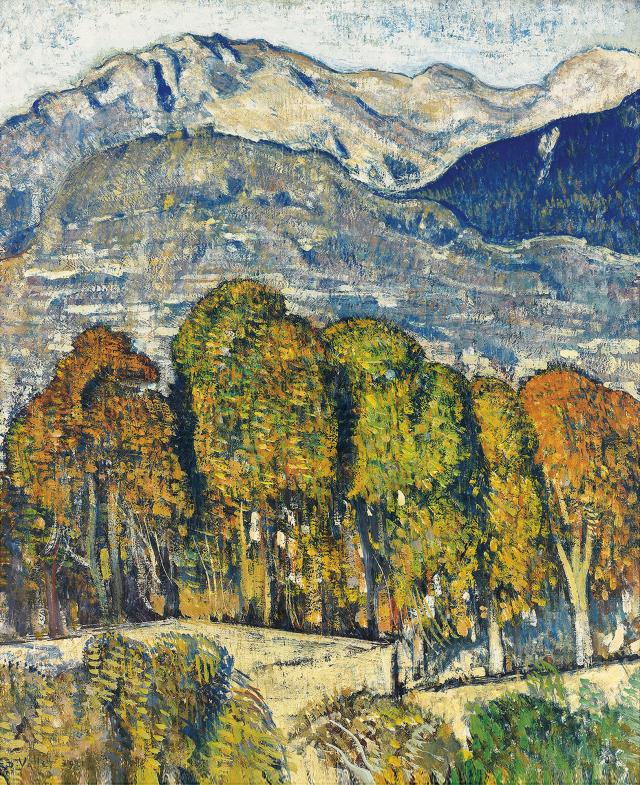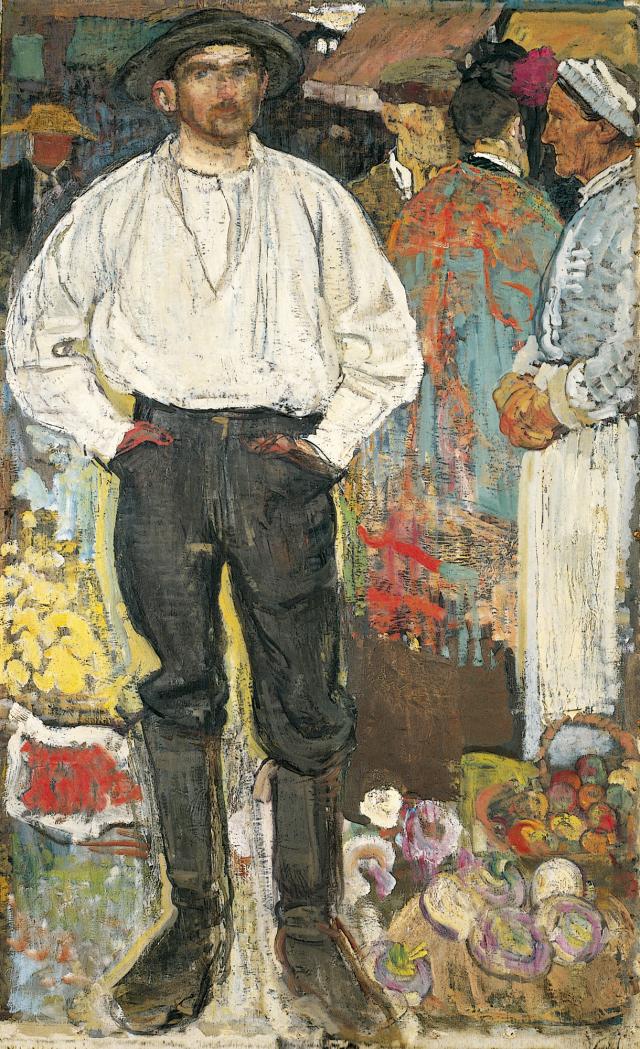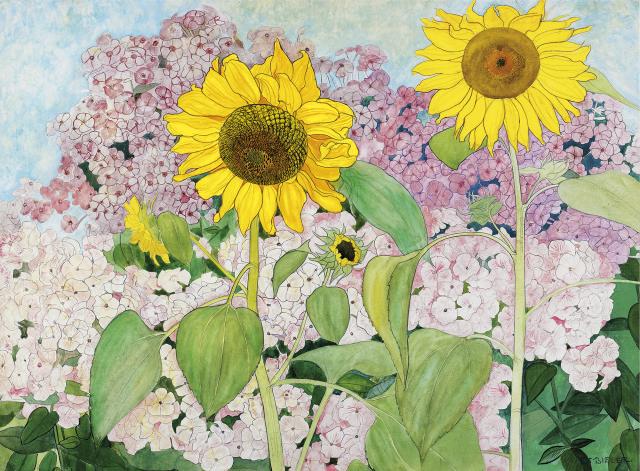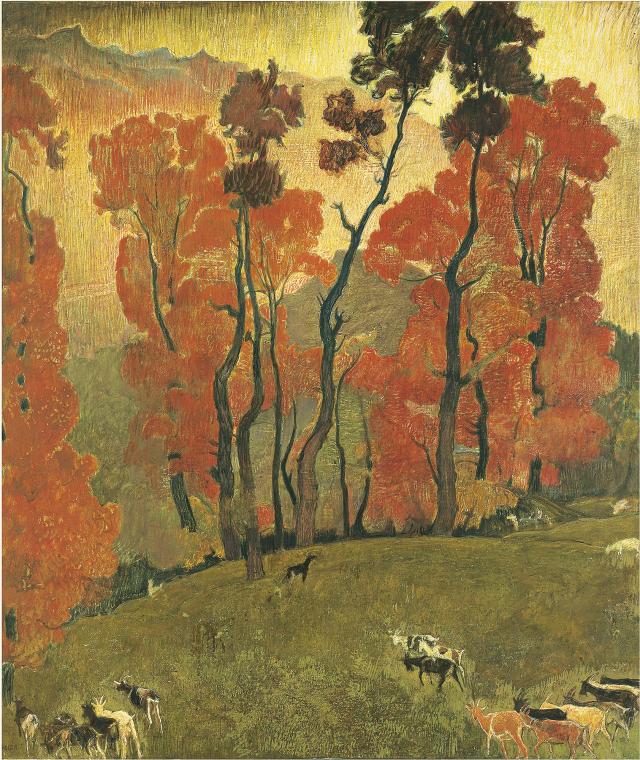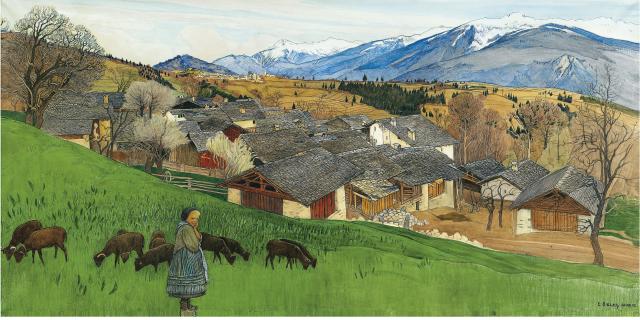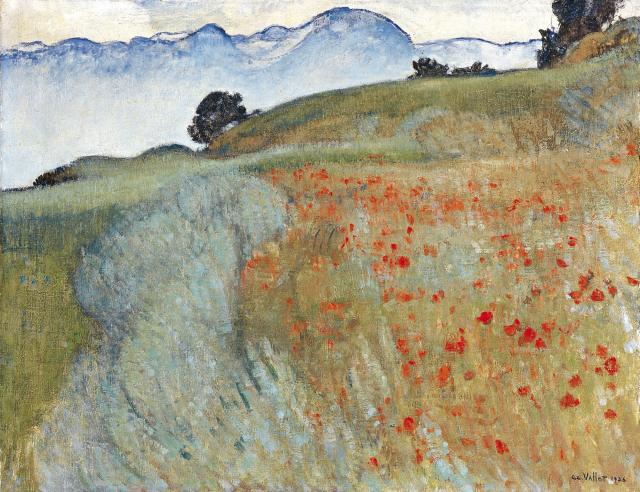Thanks to both the rapid growth of tourism in the late 19th century and the significant improvement of transportation, a few Swiss artists, in particular from Geneva and the canton of Vaud, drew from the world of the Alps their images of a vernacular Switzerland. They were reacting to a surge of nostalgia-tinged affection for a fading rural world that awakened in city dwellers fantasies of a simpler, more natural life. The landscapes of Valais offered an idyllic, archetypical image of a proto-industrial paradise far from the cities, which painters like Édouard Vallet (1876-1929) or Ernest Biéler (1863-1948) would strive to depict.
In Vallet’s work it was first and foremost the influence of Ferdinand Hodler that predominated. Like Hodler, Vallet focused on the formal qualities of mountains, notably their texture and monumentality. Eschewing the picturesque, he delimited forms with heightened outlines, which he painted in dark tones. Beyond the ascendency of his illustrious colleague, Vallet’s paintings are characterised by the earthy tones of his palette, his thick mat pigment, the different pictorial layers, and the velvety look of the whole.
Ernest Biéler executed many recreations of autumnal landscapes of the region around Savièse, whose particular splendour he liked to recreate in a play of transparency and colour. To capture the delicate contours of his subject, Biéler began working in tempera in 1905, a technique that prompted him to develop a more graphic style. Use of this technique also brought him closer to the concerns of Art nouveau, which had taken shape at the outset of the 20th century. Certain Art nouveau features can be seen in the artist’s Paysage de Zambotte, Savièse (Landscape of Zambotte, Savièse, around 1935), such as the linearity and stylisation of the natural motifs, as well as an attraction to handicrafts, as witnessed by the solid wood frame here, which the artist designed.
